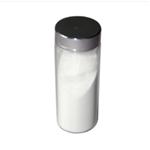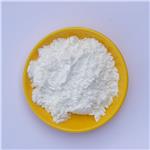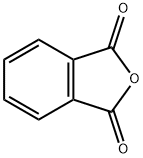Is phthalic anhydride hazardous?
May 6,2024
Phthalic anhydride is an organic compound with C6H4(CO)2O formula. It is the anhydride of phthalic acid. Phthalic anhydride is a principal commercial form of phthalic acid. Phthalic anhydride appears as a colorless to white lustrous solid in needles with a mild distinctive odor. Moderately toxic by inhalation or ingestion and a skin irritant. Melting point 64 °F Flash point 305 °F. Forms a corrosive solution when mixed with water. Used in the manufacture of materials such as artificial resins.

Acute Health Effects
The following acute (short-term) health effects may occur immediately or shortly after exposure to Phthalic Anhydride:
Contact can severely irritate and burn the skin and eyes.
inhaling Phthalic Anhydride can irritate the nose, throat, and lungs, causing coughing, wheezing, and/or shortness of breath.
Chronic Health Effects
The following chronic (long-term) health effects can occur at some time after exposure to Phthalic Anhydride and can last for months or years:
Cancer Hazard
While Phthalic Anhydride has been tested, it is not classifiable as to its potential to cause cancer.
Reproductive Hazard
At doses that are severely toxic to the mother, PhthallicAnhydride produces teratogenic effects in animals.
Other Effects
Phthalic Anhydride may cause a skin allergy. If allergy develops, very low future exposure can cause itching and skin rash.
Phthalic Anhydride may cause an asthma-like allergy. Future exposure can cause asthma attacks with shortness of breath, wheezing, coughing, and/or chest tightness.
Phthallic Anhydride can irritate the lungs. Repeated exposure may cause bronchitis to develop with coughing, phlegm, and/or shortness of breath.
Phthalic Anhydride may damage the liver and kidneys.
Fire hazard
Phthalic Anhydride may burn but does not readily ignite. Dry chemicals, CO2, water spray, or alcohol-resistant foam are used as extinguishing agents.
DO NOT use solid streams of water.
POISONouS GASES ARE PRODUCED IN FIRE, includingPhthalic Acid.
Use water spray to keep fire-exposed containers cool.
Phthalic Anhydride may form an ignitable dust/air mixture in closed tanks or containers.
Exposure
Exposure to phthalic anhydride may occur during its use as a chemical intermediate in the plastics industry. The acute (short-term) effects of exposure to phthalic anhydride in humans consist of irritation to the eyes, respiratory tract, and skin, but no permanent injury is observed. Chronic (long-term) effects observed in workers exposed to phthalic anhydride included conjunctivitis, rhinitis, rhinoconjunctivitis, bronchitis, and irritation of the skin and mucous membranes of the respiratory tract. Animal studies indicate that chronic exposure to phthalic anhydride vapor causes lung cell congestion, irritation, and injury. No studies on the reproductive, developmental, or carcinogenic effects of phthalic anhydride in humans are available. EPA has not classified phthalic anhydride for carcinogenicity.
- Related articles
- Related Qustion
- Phthalic anhydride: Pharmacodynamics, Mechanism of action, Toxicity, Applications, Preparation Apr 27, 2023
Phthalic anhydride is a white crystalline compound used primarily in the production of phthalate plasticizers, which are used to make vinyl products.
- Applications of Phthalic anhydride Nov 7, 2019
Phthalic anhydride is a toxic, white crystalline compound used in the manufacture of phthaleins and other dyes, resins, plasticizers, and insecticides.
2,6-Lutidine (2,6-dimethylpyridine, C7H9N),(I), is present in many complexes coordinated to a metal center.....
May 6,2024Organic reagents4-Bromoaniline is a versatile compound used in various applications, with its metabolism in rats studied and its synthesis involving amination of Bromobenzene yielding 100% product.....
May 7,2024APIPhthalic anhydride
85-44-9You may like
- The brief introduction of N-isopropylbenzylamine
Jun 3, 2024
- Tosylmethyl isocyanide: Reaction profile and Toxicity
Jun 3, 2024
- The toxicity of Triethylene glycol
May 14, 2024
Phthalic anhydride manufacturers
- Phthalic anhydride
-

- $0.00 / 25Kg/Bag
- 2024-06-07
- CAS:85-44-9
- Min. Order: 1KG
- Purity: ≥99.5%
- Supply Ability: 5000mt/year
- Phthalic anhydride
-

- $1200.00 / 1metric tonnes
- 2024-06-07
- CAS:85-44-9
- Min. Order: 1metric tonnes
- Purity: 99%
- Supply Ability: 100tons
- Phthalic Anhydride
-

- $0.00 / 1KG
- 2023-09-06
- CAS:85-44-9
- Min. Order: 1KG
- Purity: 99%
- Supply Ability: 500000kg




